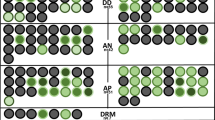Abstract
Phototrophic microbial communities present in the Roman Catacombs were characterized and different species of terrestrial epilithic cyanobacteria were found to occur as dominant organisms. Eucapsis, Leptolyngbya, Scytonema, and Fischerella were the most frequently encountered cyanobacterial taxa, while a few species of green algae and the diatom Diadesmis gallica occurred in minor amounts. Streptomyces strains, a few genera of eubacteria, and to a lesser extent fungi were always present in the same microhabitats and contributed to the deterioration of stone surfaces. The combined use of light and electron microscopy evidenced the structural relationships among rod-shaped or filamentous bacteria and cyanobacterial cells, as well as the presence of polysaccharide capsules and sheaths, and of mineral precipitates on S. julianum filaments. The significance of the intimate association among the microorganisms was discussed in relation to the damage caused by the growth of biological patinas on stone surfaces.
Similar content being viewed by others
Author information
Authors and Affiliations
Additional information
Received: 17 February 1999; Accepted: 19 May 1999
Rights and permissions
About this article
Cite this article
Albertano, P., Urzì, C. Structural Interactions among Epilithic Cyanobacteria and Heterotrophic Microorganisms in Roman Hypogea. Microb Ecol 38, 244–252 (1999). https://doi.org/10.1007/s002489900174
Issue Date:
DOI: https://doi.org/10.1007/s002489900174




